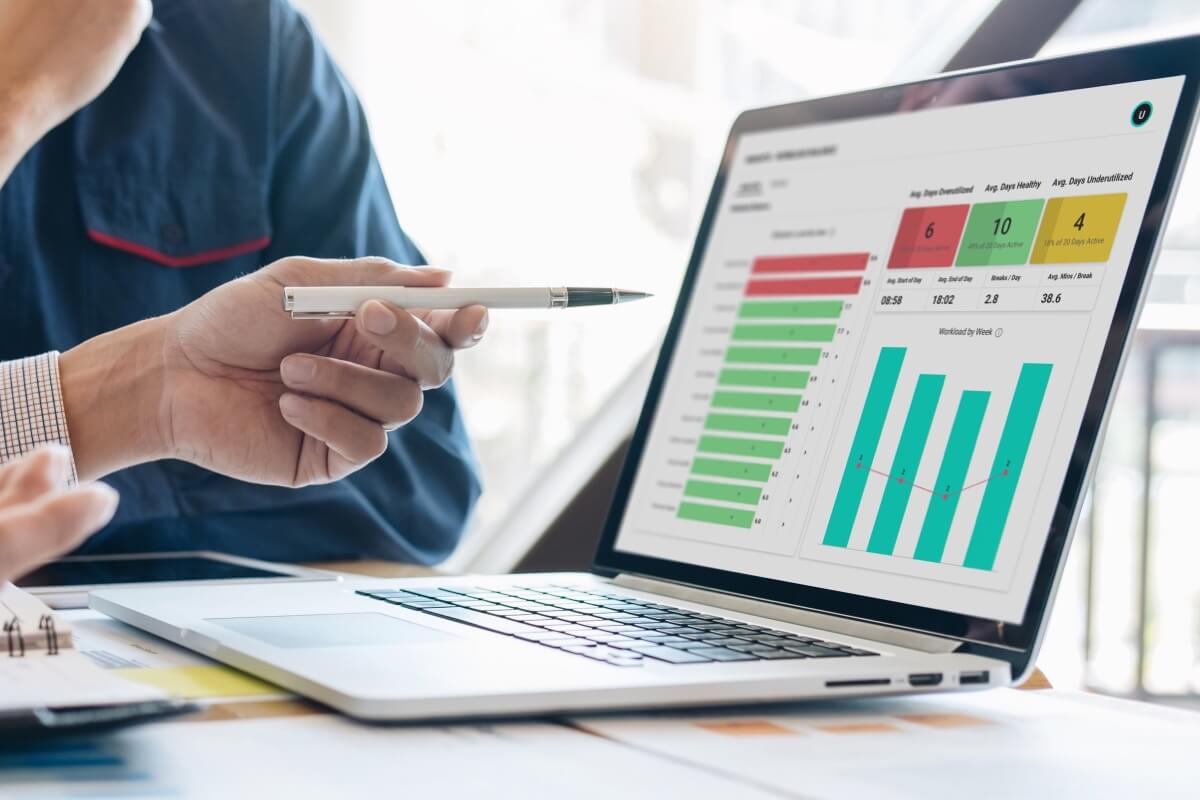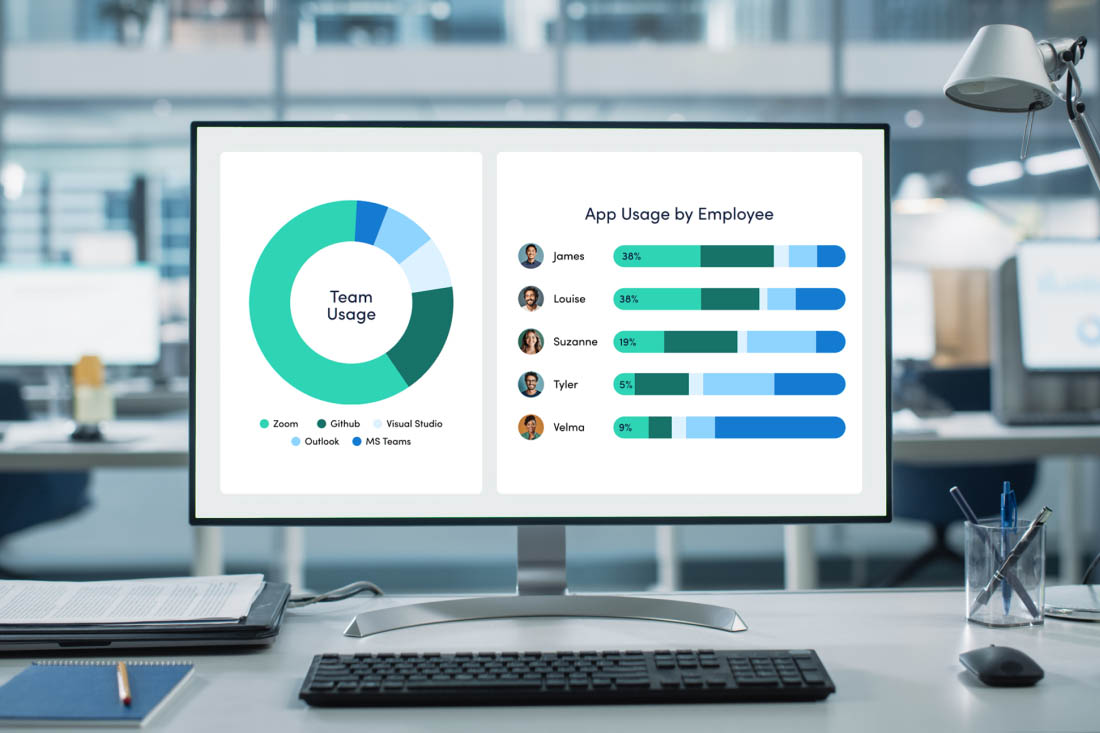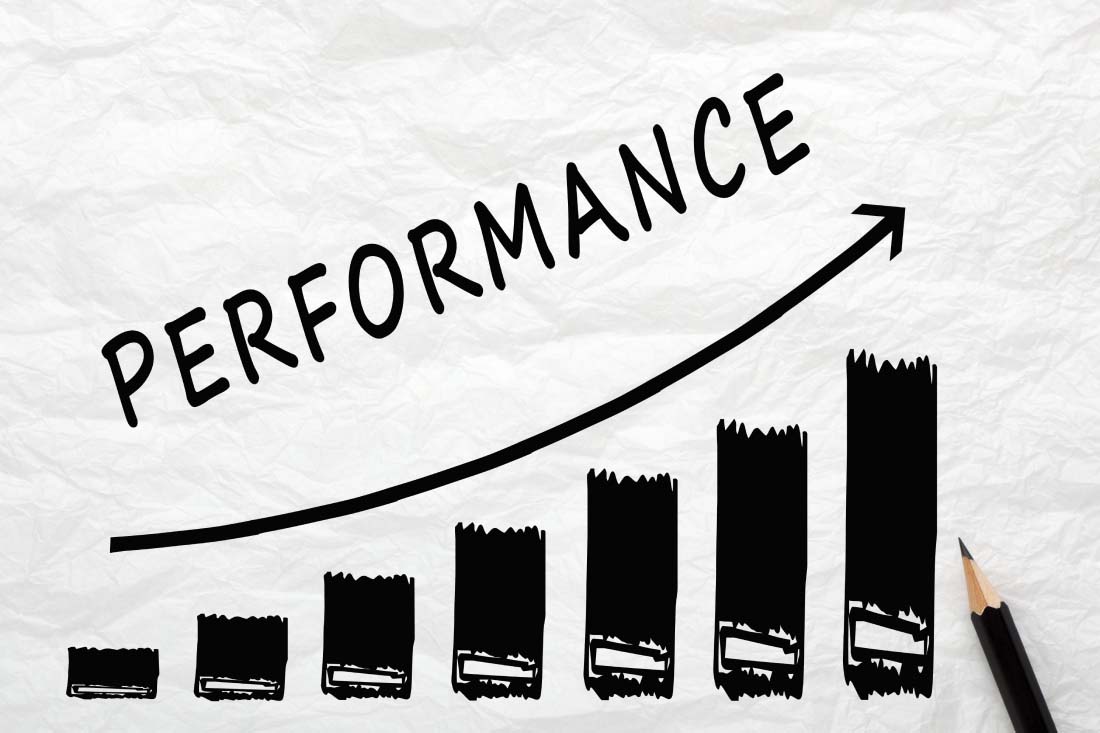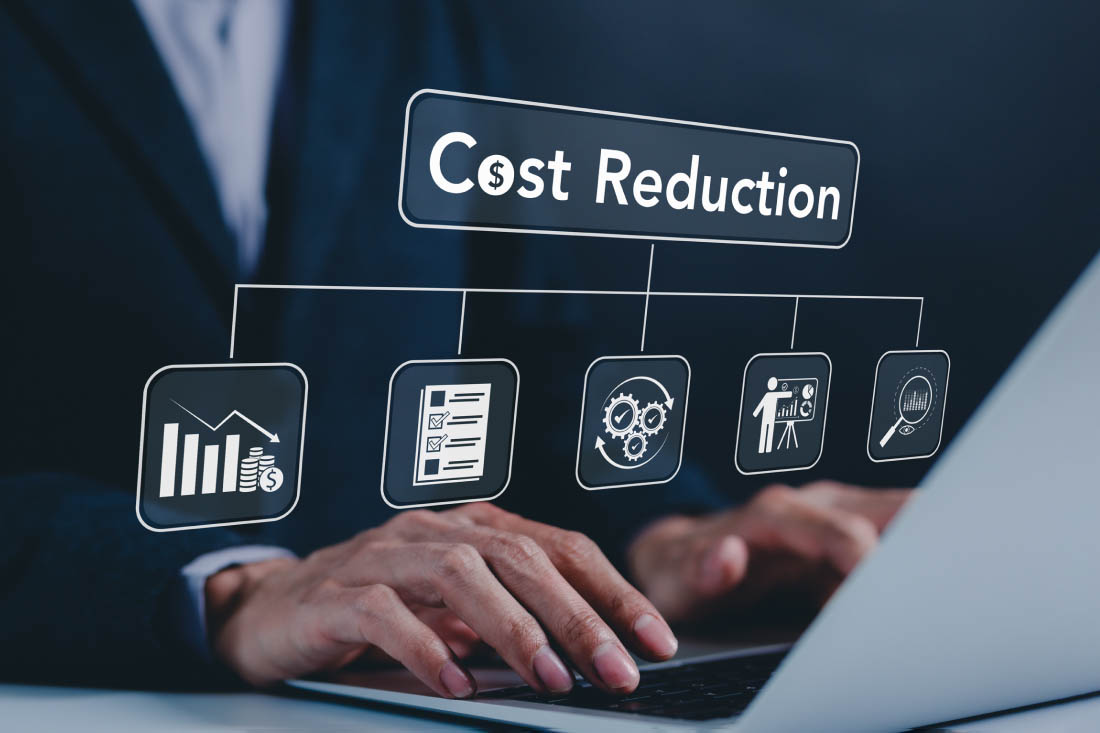It’s a tough time to be a business leader.
Hybrid work arrangements, budget cuts and changing economic news all impact how, when and where people work. These changes lead to all kinds of questions – and the answers aren’t always clear.
- How do employees spend their time?
- How are workloads balanced?
- Do you have untapped labor capacity?
- Does your office space still fit in the new ways people work?
- Are your teams fully leveraging technology investments?
Addressing these and other critical issues is critical in today’s labor climate. But how do you know if your organizational and workforce strategies are moving in lock-step?
That’s where workforce planning analytics comes in.
What are workforce planning analytics?
Workforce planning analytics helps leaders identify, analyze and address the needs of an organization’s workforce. They help you reach business goals faster by ensuring your organization has the right people with the right skills in the right location at the right cost and right time.
To better understand how workforce planning and analytics work, it helps to take a quick look at the individual components.
- Workforce analysis, including current employee skills and experience as well as gaps and future demand possibilities
- Forecasting, modeling and planning, including predicting future staff needs and capacity planning
- Talent management strategies from recruiting to retention and skills development to succession planning
- Analytics including data collection, analysis, performance analytics, reporting and predictive modeling
- Strategic alignment to ensure workforce planning aligns with organizational goals and business objectives
Workforce planning involves pinpointing the specific skills your organization needs to succeed. If you started a strategic workforce planning process today, it might look like this:
- Assess the current state of your workforce
- Decide what you want it to look like in the future
- Evaluate headcount capacity and utilization
- Identify skills gaps and resource needs
- Create an action plan to move your team forward
Workforce planning analytics are based on a variety of business goals, from attracting top talent to improving work-life balance.
Workforce analytics software helps organizations make data-driven decisions that optimize work. They pull from different data sources to help leaders audit, manage and plan for the myriad ways employees work — from time tracking and schedule adherence to productivity goal tracking and coaching, to headcount and capacity planning, and more. This data is rendered in user-friendly dashboards and reports that go beyond HR analytics and talent acquisition to reveal a full range of performance metrics and answer questions such as:
- Are employees working on activities aligned with their roles?
- Do they have the right tools?
- How much time do they spend on focused work?
- Where are they most productive — in-office or remote?
The two come together as workplace planning and analytics, which provide a framework for ensuring your organization runs as efficiently as possible.
Types of workforce planning analytics
Every organization will approach workforce planning and analytics differently, based on their industry, workforce and organizational goals. However, leaders can leverage workforce planning analytics more when they understand how each type of analytics can work for them.
There are four main types of workforce analytics:
1. Descriptive analytics
Descriptive analytics are the most common workplace analytics most organizations collect, because they’re easy. These analytics are basically a description of your workforce as it exists currently, including employee performance, turnover, retention and hiring processes. Descriptive analytics don’t get particularly deep or explain why your workforce looks the way it does.
2. Diagnostic analytics
Diagnostic analytics take descriptive analytics a step further to provide more context. HR leaders use diagnostic analytics to compare historical data to current trends and figure out why workforce outcomes are taking place. This could include explaining current changes in productivity, employee retention or turnover rates based on historical data.
3. Predictive analytics
HR leaders use predictive analytics to try to determine how the workforce will perform in the future. This means using historical data and market trends outside of the organization to build models of future possibilities. Using this data, leaders catch issues in performance or talent supply and can address them early.
4. Prescriptive analytics
Prescriptive analytics is the most powerful form of workforce planning analytics. In prescriptive analytics, data from predictive analytics informs roadmaps or plans to address the forecasted scenarios.
For example, an HR leader might use predictive analytics to determine that artificial intelligence (AI) will be a main driver of business outcomes in the future. Prescriptive analytics would use this data to steer hiring and development processes internally to upskill current workers and find talent with skills in AI to prepare the workforce for the days to come.
Benefits of workforce planning analytics
Many organizations rely on pulse surveys and sentiment analysis to understand how employees engage with their jobs, their managers and their organizations at large. While these solutions offer tremendous benefits, they don’t provide the full story.
Why? Because self-assessments and estimates are rarely accurate. Which is why workforce planning is so important. These data-driven analytics paint an objective picture of employee engagement and operations. Applied at scale, they provide several tangible benefits.
Improved employee productivity
Few organizations have a consistent method to measure employee productivity. But if you want to create a culture where productivity thrives, workforce analytics is a must.
For example, with workforce planning analytics you can evaluate:
- How much time is devoted to focused activities versus meetings and multitasking — and use those insights to guide Focus Friday decisions.
- When people lose time to context switching — and leverage that data to experiment with “off hours” for messaging apps and other distracting tools.
Better decision-making
Workforce analytics tools turn employee activities into insight, empowering leaders to visualize, measure and optimize key trends.
For example, with workforce planning analytics you can compare:
- Which apps are used most and which aren’t, as an easy way to evaluate software license spend.
- The work habits of remote, in-office and hybrid teams to inform office real estate decisions.
Increased efficiency
In a recent poll, 54% of business leaders named “cost and time efficiency” as a top challenge. Workforce planning and analytics give you a big advantage in this area.
For example, with workforce planning analytics you can see:
- Where unused capacity and uneven workloads exist across teams— and reallocate talent without adding headcount.
- What top performers do differently to streamline processes and establish performance benchmarks for other employees to follow.
Reduced risk
From layoffs and hiring freezes to merger and acquisition activity, organizations face many challenges. Data-driven workforce planning shows which employees may be at risk of burnout so you can act quickly.
For example, with workforce planning analytics you can track:
- Which employees are underutilized or overutilized — and take steps to rebalance workloads across teams.
- Periods of longer-than-average work hours so you know when it’s time to assess team coverage and adjust schedules.
Why workforce planning analytics are essential
Organizations that want to stay competitive today recognize their employees are their greatest asset and approach human resources, talent management and workforce management as they would any other aspect of the business: with data, planning and intention. Workforce planning analytics equips HR leaders with data to determine what is working for employees now, what the workforce will need in the future and how to address changes as they come.
Without an effective workforce planning strategy, your organization risks bad or disorganized data, which leads to poor decision-making. Additionally, strategic planning is key to getting leaders and stakeholders to champion workforce planning, which is key to its success. Furthermore, organizations that don’t engage in workforce planning may find themselves with old or ineffective technology, leaving their employees frustrated and unproductive.
5 steps to create an effective workforce planning and analytics strategy
Once you have a workforce analytics solution in place, you can use data to make informed workforce planning decisions. Our recommendation? Build a strategy with the following five core steps:
- Step 1: Establish your strategic objectives
- Step 2: Analyze your workforce
- Step 3: Identify gaps
- Step 4: Set business goals
- Step 5: Implement your plan
Step 1: Establish your strategic objectives
First, define what you’re solving for. This first step is critical to set the foundation for how you optimize your workforce.
Start with where you need to focus efforts, whether it’s at the organization, business unit or team level. Then identify a handful of areas you want to address first. This could involve anything from simplifying your tech stack to understanding when and where people are most productive.
The key here is to get granular. You need to know where specific problems exist to avoid taking a workplace optimization approach that’s too broad.
Step 2: Analyze your workforce
Next, establish baseline metrics to inform analysis and reporting. Use a workforce analytics platform to collect data that will help you answer questions such as:
- What does productivity look like across teams? And across locations?
- How is technology used?
- What are the biggest digital distractions?
- What percentage of my workforce works remotely?
This gives you a holistic view of your workforce so you can set benchmarks and identify areas for improvement.
Step 3: Identify gaps
In the third step, define what success looks like. Where are you now compared to where you want to be? Some questions to consider during this step include:
- What is the ideal productivity for each team?
- What should a healthy workload balance look like across team members?
- How much are specific technologies utilized?
Then set improvement goals in each area using your baseline metrics from Step Two.
Step 4: Set business goals
Once you’ve identified gaps in Step Three, create a plan to close them. Again, be precise. It’s important to identify specific levers to pull to influence real change.
If you need to prevent a critical part of the workforce from leaving, your goal might be to implement a targeted retention program. If reducing IT costs is a priority, it might involve using workforce analytics to identify a specific number of software subscriptions to cancel.
Step 5: Implement your plan
Driving meaningful change for your organization is not a one-time planning event. But how will you know if the workforce policies you’ve put in place have the desired impact over time?
As you implement your plan, decide upfront when you’ll review and report on findings. Pick a cadence that’s predictable and easy to support, such as monthly or quarterly. And look for opportunities to celebrate wins publicly with your teams and broader leadership. These will provide the momentum you need to keep going.
Essential workforce planning metrics
While every organization is different, there are several metrics that are essential for effective workforce planning. These include:
- Employee turnover and retention rates: Understanding how long employees stay with your company or if there are new trends in people leaving gives you a fuller picture of issues you need to address.
- Employee performance: Productivity, engagement and efficiency are all important metrics to guide how you allocate resources across teams.
- Headcount/full-time equivalent (FTE): This is raw number of total employees you have, which serves as a baseline to your workforce planning and analytics processes.
- Time-to-hire/cost-to-hire: How much time or cost does it take to bring a new person into your organization? This is a particularly important metric to compare to market rates to understand how competitive your company is when it comes to attracting new talent.
- Skills and gap analysis: Determine what skills your employees have, what skills your organization needs and if there’s a gap between those. This data gives your HR team a plan for development programs as well as a roadmap for what skills to hire for in the future.
- Diversity/inclusion metrics: Diversity breeds creativity, and understanding the demographics of your workforce will show you where you may have opportunities for more inclusion to strengthen your employees’ skills, ideas and collaboration.
Get smarter workforce planning analytics with ActivTrak
As workforces and technology continue to evolve, it’s imperative for organizations to implement effective workforce planning and analytics to stay competitive. Get detailed insights on your organization’s capacity, skills, retention and burnout risks with ActivTrak’s full suite of workforce analytics.
Find out how organizations of all sizes use ActivTrak to measure employee productivity and engagement, develop skills training programs and determine the right technology for their workforce. See why Trust Radius named us a 2025 Buyer’s Choice and why more than 9,500+ companies rely on us for workforce analytics and planning. Contact us today for a free demo to see how ActivTrak can make your workplace planning and analytics program work best for you.





